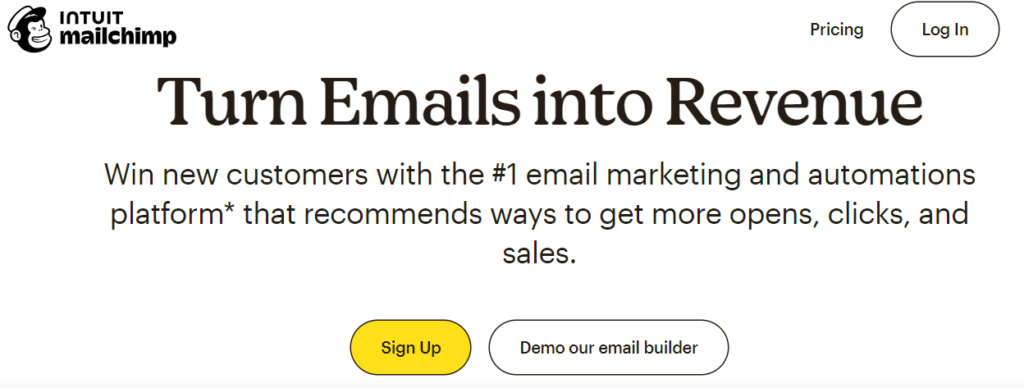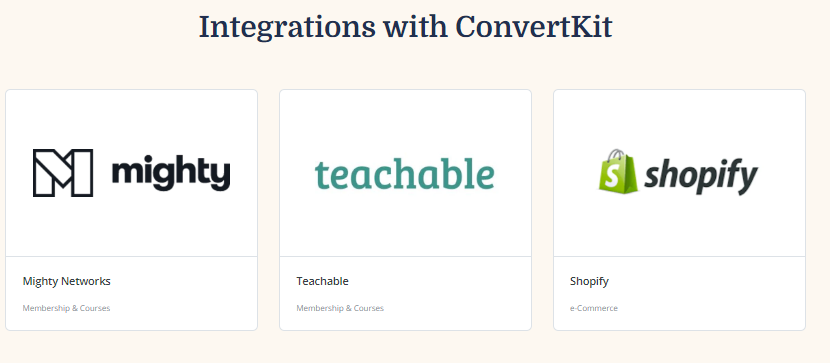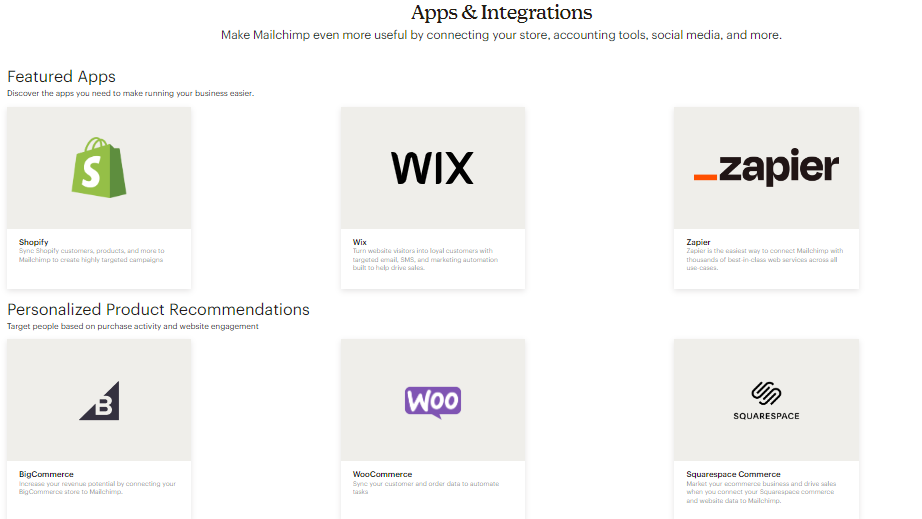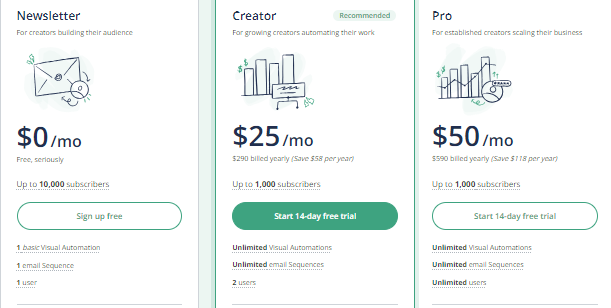Introduction
Discover the ultimate 2024 comparison of ConvertKit vs Mailchimp to determine which email marketing tool best suits your needs. The choice between ConvertKit and Mailchimp often hinges on their unique features, pros, and cons. While both platforms offer powerful capabilities, they cater to different audiences and preferences. In 2024, understanding the strengths and weaknesses of each tool can help you make an informed decision for your business. Whether you’re a content creator or managing a large e-commerce site, this guide will provide a detailed comparison to assist you in selecting the right tool to drive your email marketing success.
Table of Contents
What Is ConvertKit?
ConvertKit is a robust email marketing tool designed specifically for creators, bloggers, and small businesses. It focuses on ease of use, automation, and delivering personalized experiences to your subscribers.

Key Features of ConvertKit
- Automated Workflows: ConvertKit excels in automation, allowing you to create complex workflows with ease. You can set up sequences based on user behavior, making your emails highly personalized.

- Tagging System: This feature helps you segment your audience effectively. Tags let you organize subscribers based on their interests and actions, leading to more targeted campaigns.
- Landing Pages and Forms: ConvertKit provides intuitive tools to create landing pages and sign-up forms, which are crucial for growing your email list.

- User-Friendly Interface: The platform is designed to be simple and intuitive, even for those who aren’t tech-savvy.

- Visual Automation Builder: ConvertKit’s visual automation builder makes it easy to design and manage your automated email sequences.
What Is Mailchimp?
Mailchimp is one of the most well-known names in email marketing. It offers a wide range of features suitable for businesses of all sizes, from startups to large corporations.

Key Features of Mailchimp
- Comprehensive Email Templates: Mailchimp provides a vast library of pre-designed templates, making it easy to create visually appealing emails.

- Advanced Analytics: The platform offers detailed analytics and reporting tools, allowing you to track the performance of your campaigns effectively.

- Marketing Automation: Mailchimp’s automation features include welcome emails, abandoned cart emails, and more, catering to various marketing needs.
- A/B Testing: This feature allows you to test different versions of your emails to see which performs better, helping you optimize your campaigns.

- Integration Capabilities: Mailchimp integrates with numerous third-party applications, expanding its functionality and ease of use.
ConvertKit vs Mailchimp: Feature Comparison
Ease of Use
ConvertKit: Known for its user-friendly interface, ConvertKit simplifies the email marketing process, making it accessible even for beginners. The visual automation builder is particularly praised for its ease of use.

Mailchimp: While Mailchimp is also user-friendly, its interface can be a bit overwhelming due to the sheer number of features and options. New users might need some time to get accustomed to it.

Automation
ConvertKit: ConvertKit stands out with its powerful automation capabilities. The platform allows for sophisticated automation sequences, which can be tailored to individual subscriber actions and preferences.
Mailchimp: Mailchimp offers robust automation features as well, but they are more generalized compared to ConvertKit. For advanced workflows, Mailchimp may require additional configuration.
Email Templates
ConvertKit: ConvertKit offers a selection of templates, but the focus is more on simplicity and functionality. The template library is not as extensive as Mailchimp’s.
Mailchimp: Mailchimp excels in providing a wide variety of email templates. Whether you need a simple layout or a complex design, Mailchimp’s template library has you covered.
Analytics and Reporting
ConvertKit: ConvertKit provides essential analytics and reporting tools, including open rates, click-through rates, and subscriber growth metrics. However, it may lack the depth of Mailchimp’s analytics.
Mailchimp: Mailchimp offers advanced analytics, including detailed reports on campaign performance, subscriber activity, and e-commerce tracking. This makes it a strong choice for users who require in-depth insights.
Integration
ConvertKit: ConvertKit integrates with popular tools like WordPress, Shopify, and Zapier. However, its integration options are somewhat limited compared to Mailchimp.

Mailchimp: Mailchimp boasts a wide range of integrations with various applications and platforms. This makes it highly versatile and capable of fitting into various marketing ecosystems.

Pricing
ConvertKit: ConvertKit’s pricing is based on the number of subscribers and features you need. It offers a free plan for up to 10,000 subscribers with basic features and paid plans for advanced capabilities.

Mailchimp: Mailchimp offers a free plan with limited features and paid plans that scale with the number of subscribers and additional features. Its pricing structure can be more flexible for different business sizes.

ConvertKit vs Mailchimp: Which One Should You Choose?
For Beginners and Creators
ConvertKit is often preferred by bloggers, creators, and small businesses who need a straightforward and effective email marketing tool. Its simplicity and automation capabilities make it a great choice for those who want to focus on content creation and audience engagement without getting bogged down by complex features.
For Businesses and E-Commerce
Mailchimp is a strong contender for larger businesses or e-commerce sites that require advanced features and extensive integration options. Its comprehensive analytics and template library make it ideal for businesses looking to optimize their email marketing efforts and track performance in detail.
Pros and Cons
ConvertKit Pros
- Intuitive user interface
- Powerful automation features
- Effective tagging and segmentation
- Great for content creators
ConvertKit Cons
- Limited template options
- Fewer integrations compared to Mailchimp
- Higher pricing for advanced features
Mailchimp Pros
- Extensive email templates
- Advanced analytics and reporting
- Wide range of integrations
- Flexible pricing plans
Mailchimp Cons
- Steeper learning curve for new users
- Can become expensive as your list grows
- Automation features may be less intuitive
Conclusion
In 2024, selecting between ConvertKit and Mailchimp depends on your specific needs. ConvertKit is ideal for creators and small businesses, offering ease of use and robust automation features. Mailchimp, with its extensive templates and advanced analytics, suits larger businesses and e-commerce.
Assess your priorities—whether it’s user-friendliness, automation, or analytics—and use the free trials to find the best fit for your email marketing strategy.
Call to Action
Ready to elevate your email marketing strategy? Whether you choose ConvertKit or Mailchimp, both platforms offer free trials to help you get started. Explore their features, compare them firsthand, and make the decision that will drive your success in 2024. Click the links below to sign up for your free trial and take the first step towards optimizing your email marketing efforts!






